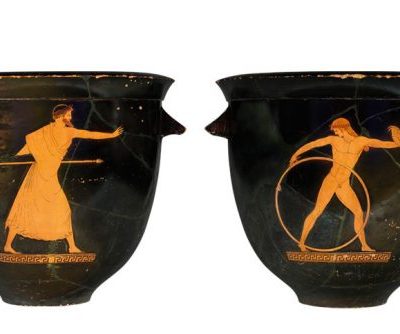The Musée Condé at Chantilly, which it takes less than an hour to reach from the heart of Paris via a short train ride from the Gare du Nord, has recently added a notable new attraction to its already illustrious offer to visitors, in the form of an elegant Cabinet d’Arts Graphiques.
Much like London’s Wallace Collection, the Musée Condé in essence does not lend works of art. (Strictly speaking, what it does not lend are pieces from the founding collection of the duc d’Aumale, but in fact these represent the lion’s share of its holdings). In the case of the paintings, this simply means – so to speak – that Mohammed has to go to the mountain, but the same conditions do not apply to works on paper, with the exception of the miraculously beautiful dismembered pages of Jean Fouquet’s Hours of Étienne Chevalier, which are on permanent display.
At Chantilly, as elsewhere, works on paper are routinely protected from undue exposure to daylight, but may of course be seen by appointment. The consequence has been that on the whole they have blushed unseen, only known about by the happy few, and only studied in the original by the most determined of specialists. The sheer scale of the collection will therefore no doubt come as a surprise to many, numbering as it does some 4,000 drawings, 5,000 prints, and 1,900 19th-century photographs. Given the eminence of the rest of the collection, its dazzling quality is entirely predictable.
All these hitherto hidden treasures can now enjoy a setting that displays them in style. The five intimate historic spaces which make up the new Cabinet have never previously been open to the public. They originally served as guest rooms for the duc d’Aumale’s closest friends and family, and were appropriately finely appointed. (In the 19th century, most unusually, they even had underfloor heating and ensuite bathrooms). They have now been immaculately restored under the direction of Pierre-Antoine Gatier, and represent a perfect environment for the tranquil contemplation of works on paper.
The new gallery’s inaugural exhibition (until 20 August 2017) is called ‘Bellini Michel-Ange Le Parmesan: L’épanouissement du dessin à la Renaissance’ (‘Bellini, Michelangelo, Parmigianini: The blossoming of Renaissance drawing’) and is accompanied by a compact but highly informative and fully illustrated scholarly catalogue by Mathieu Deldicque. In spite of its title, as a matter of fact this show is a generous anthology of no fewer than 45 sheets, in which the big three of Giovanni Bellini, Michelangelo, and Parmigianino are joined by a whole array of other artists, ranging from major figures such as Fra Bartolomeo and Baccio Bandinelli to less celebrated names – Bambaia and Orazio Samacchini, to name but two – at the height of their powers. The exhibition programme is intended to offer two or three shows a year: the next one will run from 11 September 2017 to 7 January 2018, and will be devoted to the drawings of Nicolas Poussin. It will coincide with a picture in focus exhibition on the artist’s Massacre of the Innocents, a work that stands out even among the Musée Condé’s many masterpieces.
Groupe de quatre figures debout et un drapé by Michelangelo. Chantilly, musée Condé, ©RMN (Domaine de Chantilly) / Michel Urtado

‘Bellini Michel-Ange Le Parmesan: L’épanouissement du dessin à la Renaissance’ is at the Musée Condé, Château de Chantilly, Oise.





